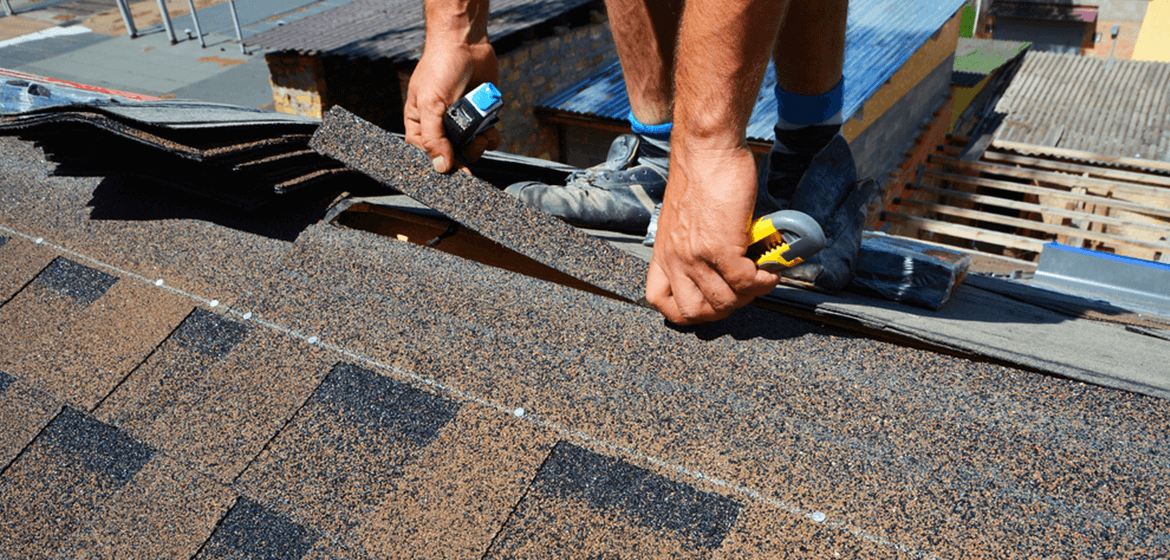
Storm damage can wreak havoc on your roof, leaving you uncertain about where to start with repairs. This guide will walk you through everything you need to know about storm damage roof repair, ensuring you can restore your roof and protect your home efficiently.
What is Storm Damage?
Storm damage to your roof can occur in various forms, from severe cases like a tree falling on your roof to less noticeable damage such as hail. Understanding the types of storm damage is crucial for effective repair and maintenance.
Types of Storm Damage
- Wind Damage
High winds can lift and remove shingles from your roof, exposing the underlying materials to further damage from rain, debris, and UV rays. This exposure can lead to leaks and deterioration of the roof’s structure over time.
- Hail Damage
Hailstones can cause significant damage by creating dents, cracks, and punctures in shingles. The impact of hail can weaken the integrity of the roofing materials, leading to leaks and reducing the overall lifespan of your roof.
- Water Damage
Heavy rains can penetrate through small openings or weak spots in your roof, leading to water infiltration. This can result in water damage inside your home, including stained ceilings, damaged insulation, and even mold growth if not addressed promptly.
- Debris Damage
Falling branches and other debris during a storm can cause severe damage to your roof’s structure. Large branches can puncture the roof, while smaller debris can accumulate and block drainage systems, leading to additional water damage and increased wear on roofing materials.
Immediate Steps to Take After a Storm
- Ensure Safety First
Before assessing any damage, ensure that your family and property are safe. Avoid going near damaged areas until you are certain they are secure.
- Conduct a Preliminary Inspection
From the ground, look for obvious signs of damage such as missing shingles, dents, and debris on your roof. Use binoculars if necessary to get a closer view without climbing onto the roof.
- Document the Damage
Take clear, detailed photos of all visible damage. This documentation will be essential when filing an insurance claim and discussing repairs with contractors.
Contacting Your Insurance Company
The first thing you should do if you suspect storm damage is to call your homeowner’s insurance company. Inform them about the potential damage and provide them with the initial information and photos you have collected.
Insurance Adjuster Inspection
Your insurance company will likely send an adjuster to inspect the damage. The adjuster will evaluate the damage and determine whether your claim will be approved.
Hiring a Roofing Contractor
If your claim is approved, it’s time to find a reliable residential roofing contractor. Choose a contractor experienced in handling insurance claims and storm damage repairs.
Finding the Right Roofing Contractor
- Look for Experience and Expertise
Ensure the contractor has extensive experience with storm damage repairs. They should know about local weather conditions and common types of damage in your area.
- Check Reviews and References
Look for reviews and ask for references from previous clients. A reputable contractor should have a history of satisfied customers.
- Verify Licensing and Insurance
Make sure the contractor is licensed and insured. This protects you from liability in case of accidents or further damage during the repair process.
- Get a Detailed Estimate
Request a written estimate detailing the scope of work, materials needed, and the total cost. This helps avoid any surprises later on.
The Roof Repair Process
- Inspection and Assessment
A thorough inspection will identify all areas of damage, including those that may not be immediately visible. This includes checking for structural damage, leaks, and compromised areas.
- Temporary Repairs
If necessary, temporary repairs may be made to prevent further damage. This could include tarping over damaged sections to protect against water infiltration.
- Removing Damaged Materials
All damaged shingles, underlayments, and other materials will be removed. This step ensures that the repairs are built on a solid, undamaged foundation.
- Repairing Structural Damage
If the roof’s structure has been compromised, repairs or reinforcements will be made. This is crucial for maintaining the roof’s integrity and safety.
- Installing New Materials
New shingles, underlayment, and other materials will be installed. The contractor will ensure that these materials are properly aligned and securely fastened.
- Final Inspection
A final inspection will be conducted to ensure that all repairs have been completed correctly and that the roof is in optimal condition.
Preventing Future Storm Damage
- Regular Maintenance
Regular roof maintenance can help identify and address minor issues before they become major problems. Schedule annual inspections and cleanings to keep your roof in good shape.
- Trim Overhanging Branches
Keep trees trimmed and away from your roof to reduce the risk of falling branches during storms.
- Upgrade Roofing Materials
Consider upgrading to more durable roofing materials designed to withstand severe weather conditions. Consult with your contractor about the best options for your home.
- Install Proper Ventilation
Proper roof ventilation helps prevent moisture buildup and prolongs the life of your roofing materials. Ensure your roof has adequate ventilation to withstand various weather conditions.
Common Mistakes to Avoid During Storm Damage Roof Repair
- Delaying Repairs
Postponing repairs can lead to more extensive damage and higher costs. Address storm damage as soon as possible to prevent further issues.
- Choosing the Cheapest Contractor
While it’s important to stay within budget, opting for the cheapest contractor can lead to poor workmanship and additional problems. Focus on quality and experience.
- Not Understanding Your Insurance Policy
Familiarize yourself with your insurance policy to understand what is covered and the steps you need to take. This will help you navigate the claim process more effectively.
- Ignoring Small Damages
Even minor damages can lead to significant problems over time. Ensure that all damage, no matter how small, is addressed during repairs.
When to Replace Your Roof
In some cases, storm damage may be extensive enough to warrant a full roof replacement. Your contractor can help determine whether repairs or replacement is the best option for your situation.
Signs You Need a Roof Replacement
- Extensive shingle damage or loss
- Severe structural damage
- Multiple leaks and water damage
- Age of the roof (if it’s nearing the end of its expected lifespan)
Factors Affecting the Cost of Storm Damage Roof Repair
Several factors can influence the cost of storm damage roof repair, including:
- Extent of Damage
The severity of the damage significantly impacts the overall repair cost. Minor damages, such as a few missing shingles or small leaks, will generally be less expensive to fix than extensive structural damage or widespread shingle loss. If the storm has caused underlying issues like compromised roof decking or insulation, the repair costs will increase due to the additional labor and materials required.
- Type of Roofing Materials
The type of materials used on your roof also plays a crucial role in determining repair costs. Asphalt shingles are typically more affordable to repair or replace than premium materials like metal, tile, or slate. Additionally, matching the existing materials can sometimes be challenging and may incur higher costs if the materials are no longer readily available or need to be custom-ordered.
- Labor Costs
Labor costs can vary widely based on the complexity of the repair and the contractor’s expertise. More intricate repairs or those requiring specialized skills will naturally cost more. Additionally, labor rates can differ based on the region, with urban areas typically having higher rates compared to rural locations.
- Geographic Location
Your geographic location affects both labor costs and the availability of materials. Areas prone to severe weather may have higher repair costs due to increased demand for roofing services and materials. Local building codes and regulations can also impact costs, as compliance with specific standards might require additional work or materials.
Getting a Fair Estimate
To ensure you get a fair estimate for your storm damage roof repair, it’s essential to obtain quotes from multiple contractors. Here’s how to do it effectively:
- Request Detailed Quotes
Ask each contractor for a detailed written estimate that outlines the scope of work, materials needed, labor costs, and any additional fees. This transparency helps you understand what each quote includes and makes it easier to compare different offers.
- Evaluate Experience and Reputation
While cost is a crucial factor, it’s equally important to consider the contractor’s experience and reputation. Look for contractors with a proven track record in storm damage repairs and positive reviews from previous clients. Quality workmanship often justifies a higher price and can save you money in the long run by preventing future issues.
- Compare Multiple Quotes
By comparing multiple quotes, you can get a better sense of the market rate for your repair needs and avoid being overcharged. Be wary of quotes that are significantly lower than others, as they may indicate subpar materials or workmanship. Choose a contractor who offers a balance of fair pricing and high-quality service.
Dealing with storm damage to your roof can be a daunting task, but with the right knowledge and resources, you can navigate the repair process effectively. Remember to act quickly, choose a reputable contractor, and maintain regular upkeep to protect your home from future storms.
For comprehensive and reliable storm damage roof repair, contact us at Dane Roofing, LLC. We are dedicated to providing high-quality roofing services and guiding you through every step of the repair process.
If you’re in need of expert storm damage roof repair, don’t hesitate to reach out to us. Our experienced team is here to help you restore your roof and ensure your home remains protected.

